
David Lam
@davidalam.bsky.social
Development economist and economic demographer, University of Michigan.
9) I simulate future trends with and without the UN projected population changes. Total world food consumption is projected to increase 15% by 2084 due to income growth alone. This increases to 45% when each country follows the median UN population projections.
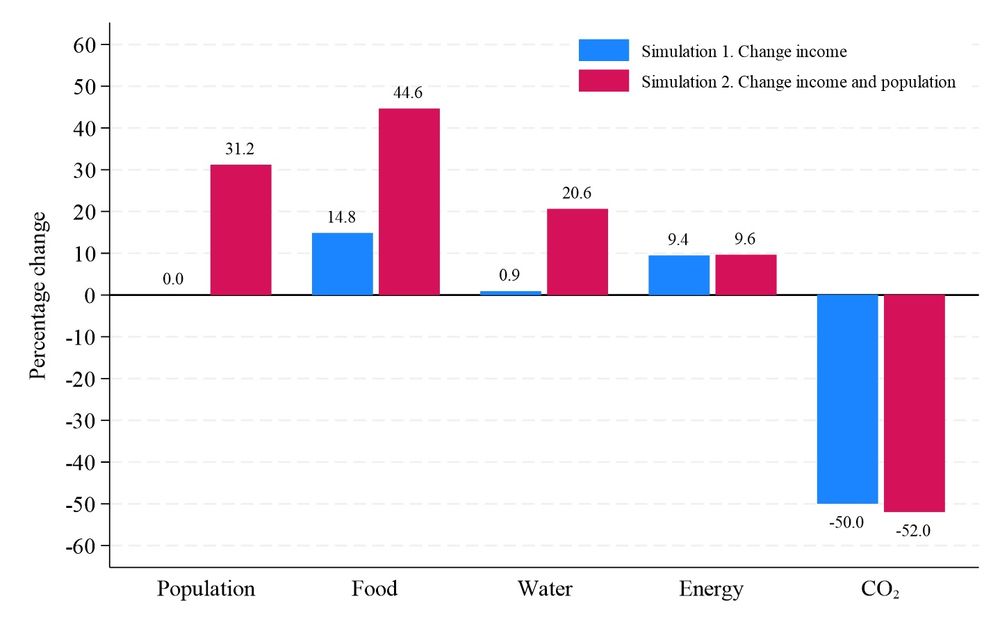
January 24, 2025 at 5:33 PM
9) I simulate future trends with and without the UN projected population changes. Total world food consumption is projected to increase 15% by 2084 due to income growth alone. This increases to 45% when each country follows the median UN population projections.
7) Second, population growth to 2084 is concentrated in low-income (LICs) and lower-middle-income (LMIC) countries, which collectively will add 2.9 billion people 2019-84. Upper-middle-income (UMIC) and high-income (HIC) countries will lose 0.5 billion, including a 600 million drop in China.
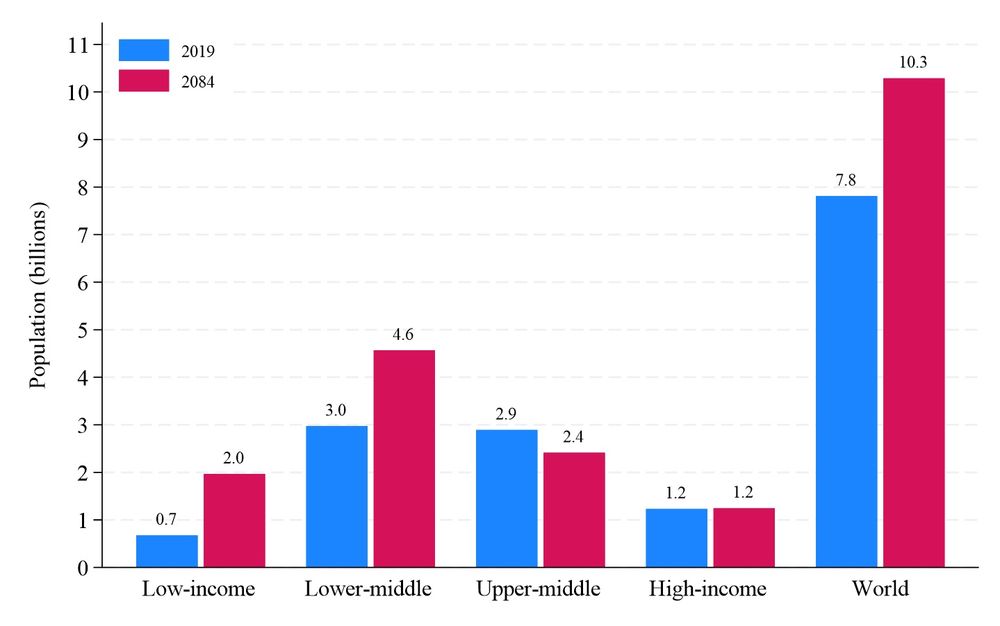
January 24, 2025 at 5:32 PM
7) Second, population growth to 2084 is concentrated in low-income (LICs) and lower-middle-income (LMIC) countries, which collectively will add 2.9 billion people 2019-84. Upper-middle-income (UMIC) and high-income (HIC) countries will lose 0.5 billion, including a 600 million drop in China.
6) First, per capita consumption levels differ significantly by income level, with steeper gradients for energy and CO2 than for food and water. Food p/c is 1.5 times higher in high-income countries (HICs) than low-income countries (LICs), but CO2 p/c is 35 times higher in HICs than LICs.
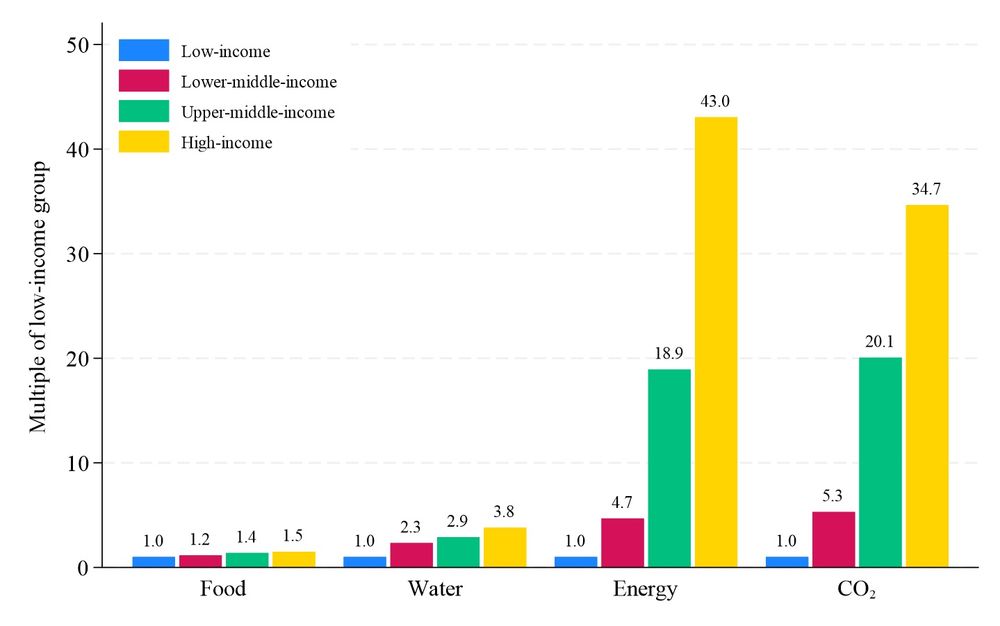
January 24, 2025 at 5:31 PM
6) First, per capita consumption levels differ significantly by income level, with steeper gradients for energy and CO2 than for food and water. Food p/c is 1.5 times higher in high-income countries (HICs) than low-income countries (LICs), but CO2 p/c is 35 times higher in HICs than LICs.
2) We have not had major shortages of non-renewable resources, in spite of adding over 5 billion people since 1960. Pre-COVID, real prices of most non-petroleum resources were around 1960s levels. After COVID spikes, prices are returning to 1960s levels.
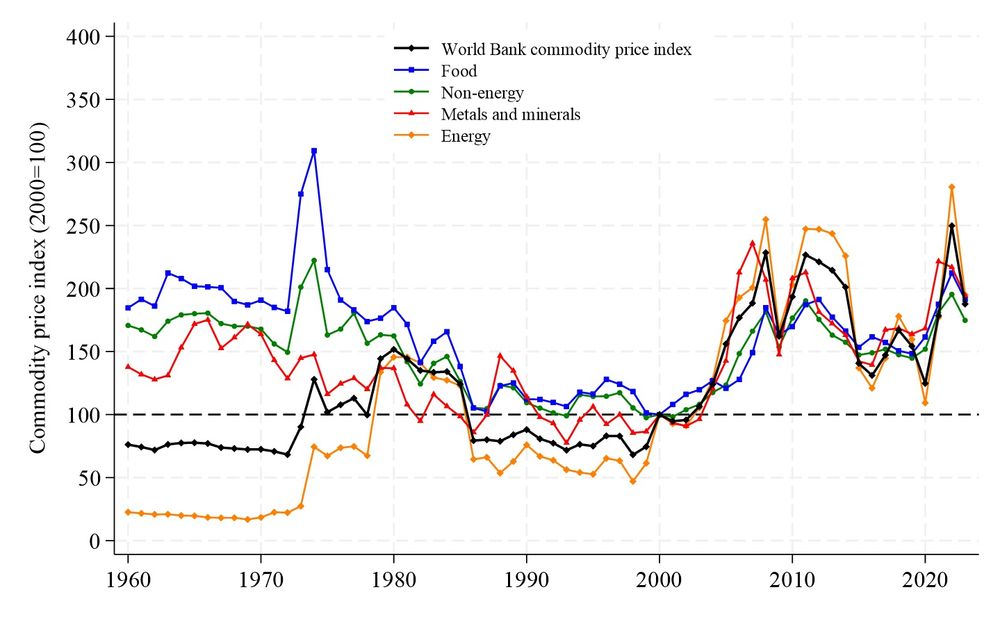
January 24, 2025 at 5:28 PM
2) We have not had major shortages of non-renewable resources, in spite of adding over 5 billion people since 1960. Pre-COVID, real prices of most non-petroleum resources were around 1960s levels. After COVID spikes, prices are returning to 1960s levels.
1)The last 60 years are encouraging regarding food and non-renewable resources. Food production per capita has risen in every region, though barely so in Africa. Population growth rates are falling everywhere, so food production does not need to grow as fast as in recent decades.
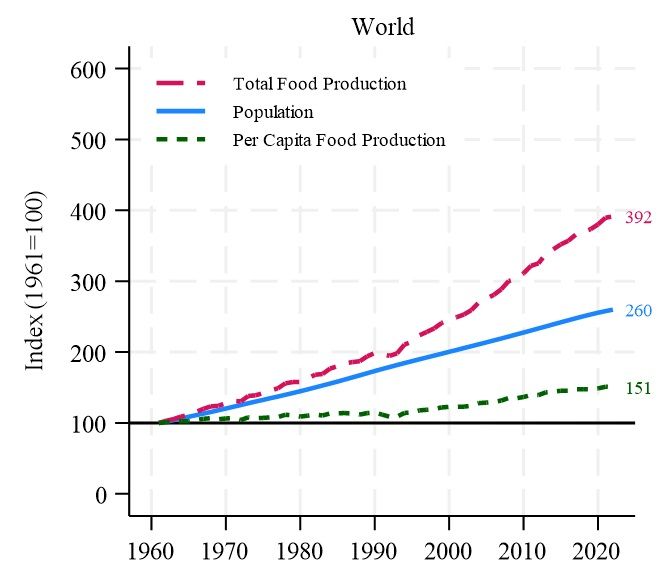
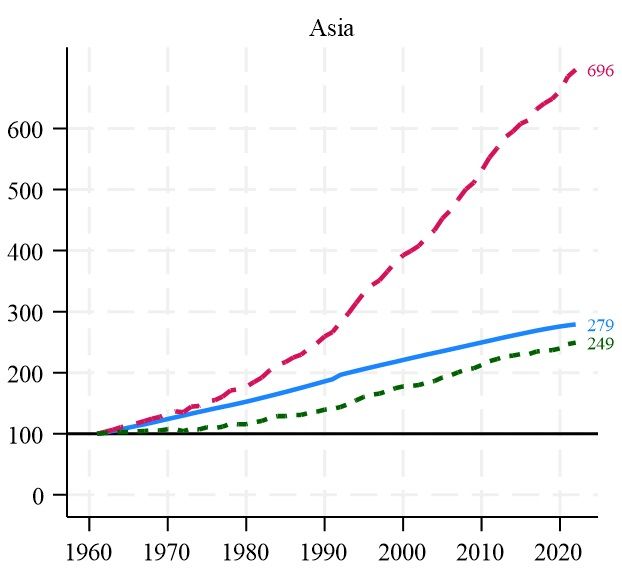
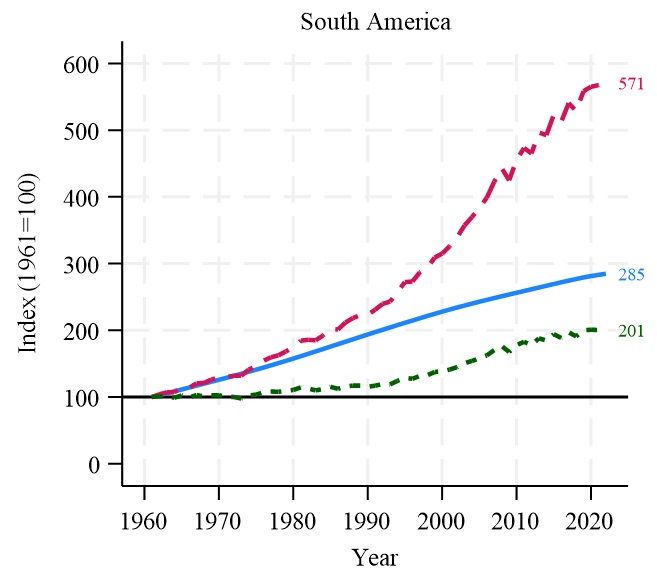
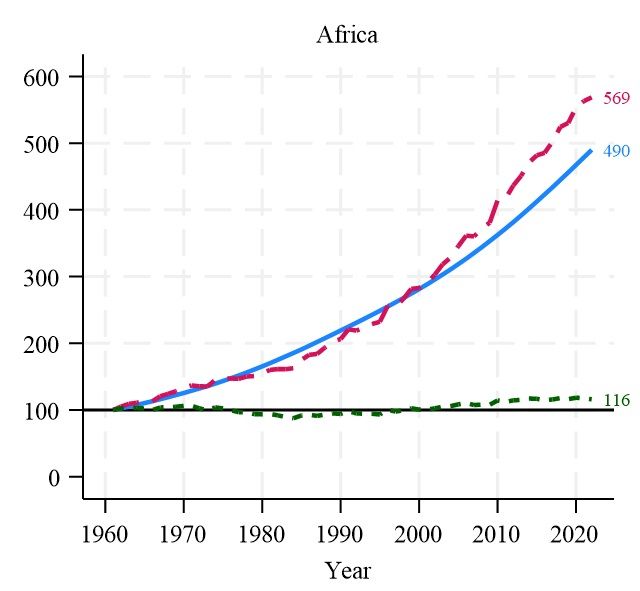
January 24, 2025 at 5:27 PM
1)The last 60 years are encouraging regarding food and non-renewable resources. Food production per capita has risen in every region, though barely so in Africa. Population growth rates are falling everywhere, so food production does not need to grow as fast as in recent decades.

